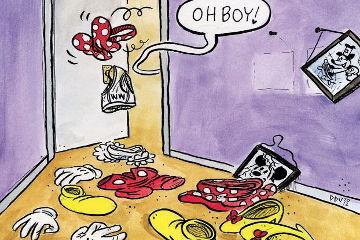What I’ve Learned:
Immunoglobulin: even your immune system has door greeters.
I took an immunology class back in college. I’m not sure why, exactly — maybe I thought it said “immortality” and I was looking for the secret to eternal life.
What? I went through a Highlander phase. We’ve all been there.
Anyway, it quickly became clear this class was something completely different — and completely hard. Everything about immunology is complicated as hell. There are, like, nine hundred different kinds of immune cells, a billion marker proteins and pathways out the wazoo. Stuff gets activated. Things turn into other things. Some cells remember crap, some cells spread the word about crap, other cells kill crap… it’s exhausting.
Then they told us about immuno-goblins. And finally, something made perfect sense. It was a couple of months into the semester, the middle of October just like now. Halloween was looming, so goblins were on everyone’s mind.
So when the professor explained these immunogoblins are produced in enormous hordes within the body, each on the lookout for a specific interloper, it made sense. When she told us each immunogoblin’s individual characteristics comes from mutations… well, duh. And when she said they either neutralize invaders or mark them for others to overwhelm — yeah, that sounds exactly like a bunch of goblins.
I went into that test full of answers. Basically, my body is Mordor. It pumps out goblins by the billions, looking out for viruses and bacteria and, I don’t know, effeminate ring-bearing halflings? I didn’t really study for those Tolkien exams, either.
Long story short, I got a 12% on the test, failed the class and apparently there’s not a little tiny Saruman living inside of me, releasing hordes of goblins.
(Turns out it was heartburn. Booo-ring.)
But all that stuff about immunogoblins — sorry, I was informed in red ink those are “immunoglobulins” — is apparently true. These are proteins produced by our immune cells in huge numbers, with millions of different kinds. The tips of each protein contain regions called paratropes, shaped to specifically recognize one specific antigen. Like an elbow of an influenza virus, or a tuberculosis pinky toe.
Binding of an immunoglobulin to its antigen may take the baddie out of commission. But just in case, it also triggers the immunoglobulin to signal to the rest of the immune system to get its ass in gear and come help.
That’s less of a “goblin” thing that immunoglobulins do, I guess. It’s more like a Wal-Mart greeter. Assuming the Wal-Mart was staffed by sentient killer cells ready to surround you, break you in half and eat you. Which, as I understand it, is most Wal-Marts.
In the end, I did learn a couple of things about immunoglobulins. So if you’re ever stuck staring down an immunology exam, just remember these three things:
1. When an immunoglobulin is glommed onto an immune cell, it’s just called an immunoglobulin. But when it’s farted out into the bloodstream to look for victims, it’s called an “antibody”. Personally, I would have gone with “Globs the Bounty Hunters”. This is probably why no one ever asks me to name things.
2. That “paratrope” bit that makes immunoglobulins unique has nothing to do with paratroopers, even if you have an awesome story about your great-grandfather dropping into occupied France to storm… uh, Nazi baguette bunkers or whatever. History was also not a thing I was good at.
3. Immunoglobulins are not like goblins, which means your body is also (probably) not like Mordor. Instead, they’re like evil greeters, which makes your body a Wal-Mart built on a hellmouth. Which seems redundant, and also mostly the same as Mordor, but I’m not the one grading these tests, so give the professors what they want, I guess.
Like I said: immunology is complicated.







